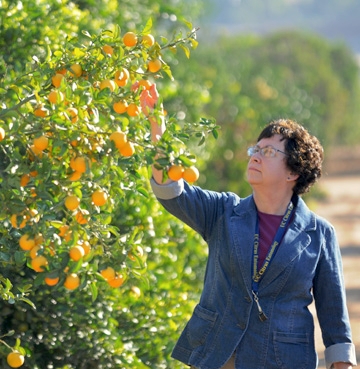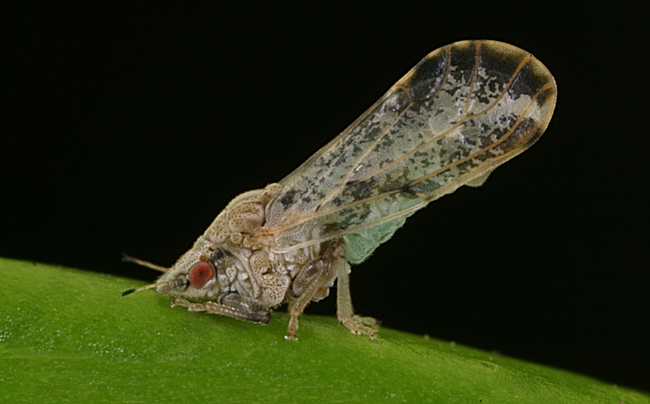
Think ACP. Think HLB. Think ASAP.
ACP spreads the killer huanglongbing (HLB) disease, also called "citrus greening," which is threatening California's citrus industry and residential landscapes. Some 60 percent of California homeowners have at least one citrus tree.
The brown-mottled, aphid-sized pest (Diaphorina citri), a native of Pakistan, was first detected in California in 2008. It earlier wreaked havoc in Florida's citrus industry. Due to HLB and citrus canker, the Florida citrus industry has lost nearly 50 percent of its citrus production in the past 10 years, according to the national Citrus Research Board.
California has more to lose. The Golden State is the No. 1 economic citrus state in the nation, ranking first in the U.S. in terms of economic value and second (after Florida) in terms of production, says the national Citrus Research Board. "California produces approximately 80 percent of the nation's fresh fruit citrus and is the country's main source (80 percent) of fresh-market oranges (Florida grows oranges mainly for juice)."
It's crucial to check for signs of this pest now--right now--because of the new leaf growth (flush). The young, tender leaves are perfect for psyllids. Tell-tale signs of psyllid presence include distorted new leaves and stems, waxy deposits, honeydew and sooty molds.
Checking for psyllids is our first line of defense.
“We encourage home citrus growers and farmers to go out with a magnifying glass or hand lens and look closely at the new growth,” said Beth Grafton-Cardwell, UC Agriculture and Natural Resources (UC ANR) citrus entomologist. “Look for the various stages of the psyllid – small yellow eggs, sesame-seed sized yellow ACP young with curly white tubules, or aphid-like adults that perch with their hind quarters angled up.”
Photos of the Asian citrus psyllids and the life stages are posted on the UC ANR website at http://ucanr.edu/acp. If you find signs of this insect, you're urged to telephone the California Food and Agriculture (CDFA) Exotic Pest Hotline at (800) 491-1899.
Yellow mottling on the leaves may be the first sign your citrus tree is infected with the HLB. Other indications are sour misshapen fruit. If your tree has HLB, that's a death sentence. It will die. You cannot save it.
CDFA officials recently removed a few HLB-infected trees in urban Los Angeles County.
“In California, we are working hard to keep the population of ACP as low as possible until researchers can find a cure for the disease,” Grafton-Cardwell said. “We need the help of citrus farmers and home gardeners.”
A new UC ANR ACP website for citrus growers and homeowners provides help in finding the pest and what to do next. The site, spearheaded by Grafton-Cardwell, includes an interactive map so viewers can locate where the psyllid is established, and areas being targeted.
The website outlines biological control efforts that are underway, and directions for insecticidal control, if it is needed. An online calculator allows farmers and homeowners to determine their potential costs for using insecticides.
Additional measures and precautions are advised:
- When planting new citrus trees, purchase the trees only from reputable nurseries. Do not accept tree cuttings or budwood from neighbors, friends or relatives. HLB can be spread by grafting.
- After pruning or cutting down a citrus tree, dry out the green waste or double bag it to ensure that live psyllids won't hitch a ride to another region and spread HLB from tree to tree.
- Control ants in and near citrus trees with bait stations. Scientists have released natural enemies of ACP in Southern California to help keep the pest in check. However, ants will protect the psyllids from the natural enemies. Ants feed on honeydew.
- Learn more about the Asian citrus psyllid and huanglongbing disease on UC ANR's Statewide Integrated Pest Management website.
- Assist in the control of ACP by supporting CDFA insecticide treatments on your citrus or treating the citrus yourself when psyllids are present.
- Support the removal of HLB-infected trees.
HLB has seriously impacted citrus production in Brazil, India, Asia, the Arabian Peninsula, Africa and now Florida. We don't want California added to that list.
Attached Images:
